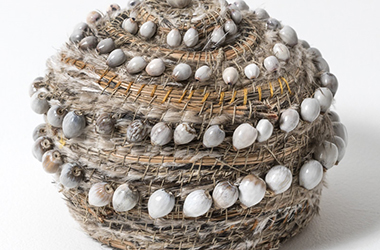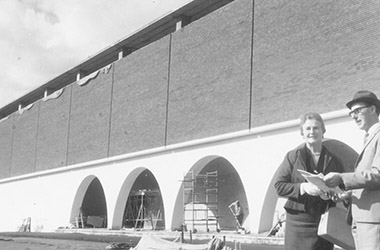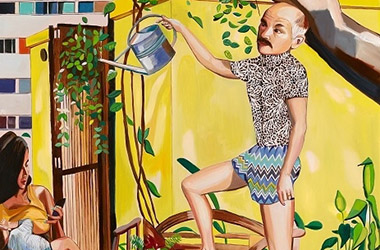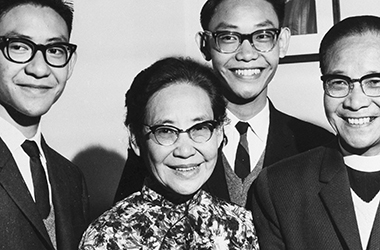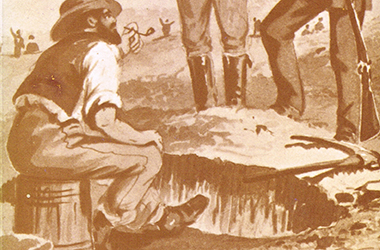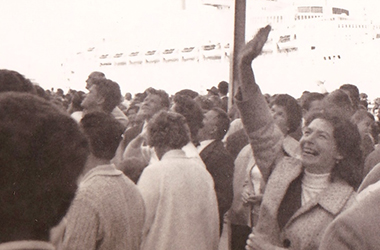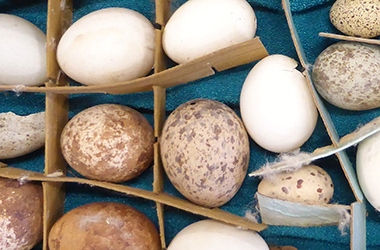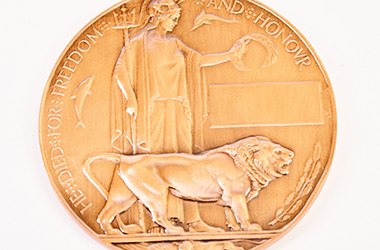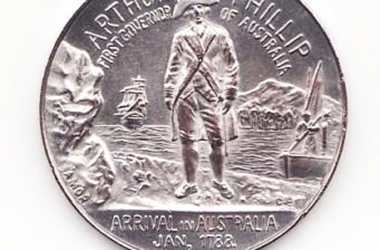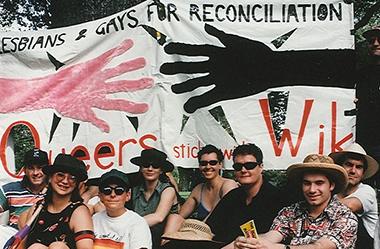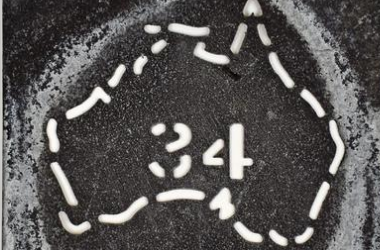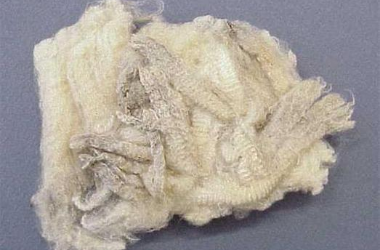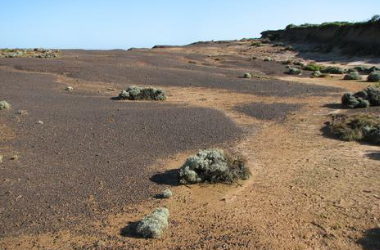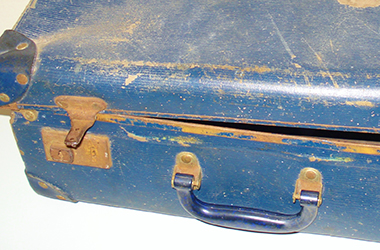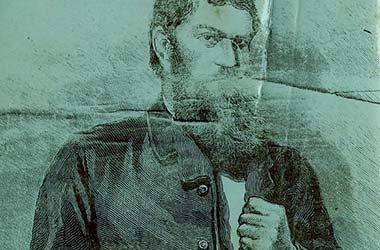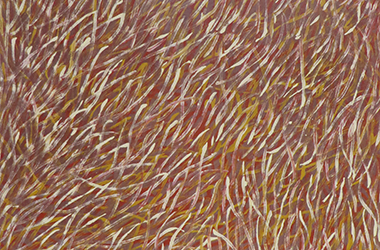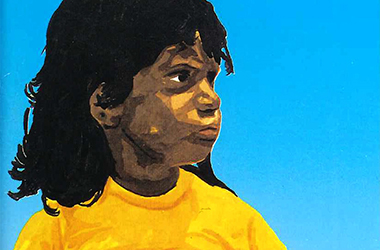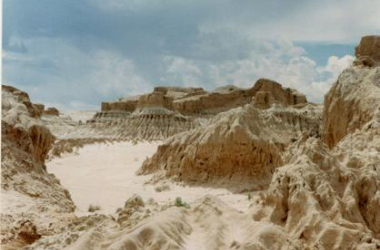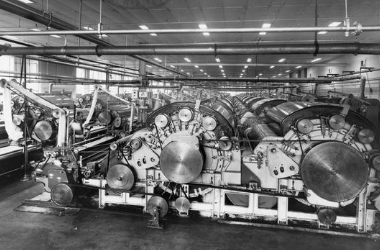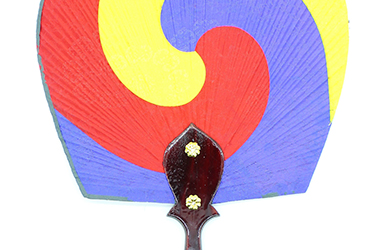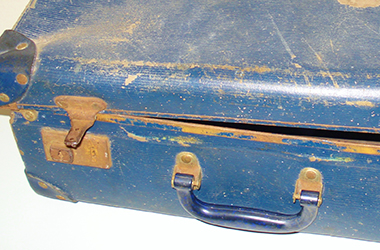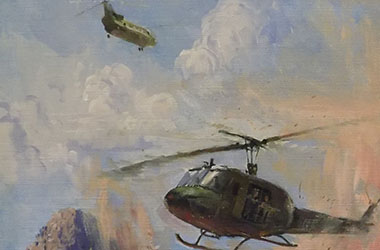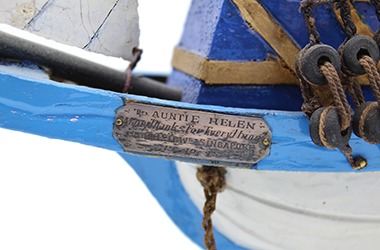Browse stories
-

Against the Odds: The victory over conscription in World War One
In October 1916 and December 1917 two contentious referendums were held in Australia, asking whether the Commonwealth government should be given the power to conscript young men into military service and send them to war overseas.
These campaigns were momentous and their legacy long-lasting. This is the only time in history that citizens of a country have been asked their opinion about such a question, and the decisive 'No' vote that was returned remains the greatest success of the peace movement in Australia to date. Yet the campaigns split families, workplaces and organisations, and left an imprint on Australian politics that lasted for decades.
Many of the actors and events that were central to these campaigns were based in the northern Melbourne suburbs of Brunswick and Coburg. In many ways, these localities were a microcosm of the entire campaign. Against the Odds: The Victory Over Conscription in World War One tells the story of the anti-conscription movement in Australia during World War 1 through this lens.
-

Cuc Lam
Cuc Lam left her whole family behind when she fled from Vietnam in 1978 with her husband Minh.
They escaped in a fruit and vegetable boat down the Mekong Delta, disguised as fishermen. Cuc was able to take very few belongings with her: a watch from her sister, her wedding ring, her mother's earrings.
After 8 days at sea, they were finally picked up by a Malaysian ship. It was whilst in a Malaysian refugee camp that she heard she had been accepted into Australia, and sold her wedding ring to buy a red vinyl suitcase, so that she would not arrive in her new country empty handed. Cuc and Minh stayed in a Maribyrnong hostel in Melbourne until 1979, when Cuc had her first baby.
A former Maribyrnong City councillor, Cuc now works at Centrelink and continues supporting her family in Vietnam.
-

The Koorie Heritage Trust Collections and History
CULTURAL WARNING: Aboriginal and Torres Strait Islander users are warned that this material may contain images and voices of deceased persons, and images of places that could cause sorrow.
The Koorie Heritage Trust was established in 1985 with a commitment to protect, preserve and promote the living culture of the Indigenous people of south-east Australia.
Today the Trust boasts extensive collections of artefacts, paintings, photographs, oral history recordings and library materials.
Further information on Tommy McRae can be found at the State Library of Victoria's Ergo site
-

Contemporary Art & Ceramics at Shepparton Art Museum
Shepparton Art Museum (SAM) holds one of Australia’s most significant collections of Australian ceramics.
Begun in 1965 with the acquisition of a simple coil pot, the museum’s collection is rich and idiosyncratic; including convict-era pottery, an archive of commercially produced domestic ware, studio ceramics from the 1920s onward and contemporary art.
Along with the ceramics collection, SAM holds a historically significant collection of Australian painting, works on paper and sculpture, and a growing collection of contemporary art.
-

Victorian Jazz Stories
Victoria has always had a thriving jazz scene. For the best part of a century, jazz musicians young and old have enthralled audiences and pushed their artistic practice to the limits in Victoria and beyond.
What is it that makes Victoria a jazz hub and who are the people that have contributed to it over the years, from Georgia Lee to Graeme Bell's Czechoslovak Journey to Julia Messenger?
The Australian Jazz Museum has the largest collection of Australian jazz related materials in the country. Through the objects in this vast collection and the organisation's connection to the jazz scene both past and present, audiences are transported into the cool, humble and underground world of Victorian jazz.
-

The Apinis Loom
When Latvian refugees Anna and Ervins Apinis arrived in Australia in 1950 they brought with them a loom built of wood salvaged from bombed out German ruins, along with Anna's precious notebooks full of traditional fabric designs.
Anna Strauss was born in 1913 in Latvia. She attended weaving lessons in Leipaja from 1930 to 1933 and spent hours at the nearby Ethnographic Museum recording traditional fabric designs in her notebooks.
She married Ervins Apinis, an engineer, in 1938 and they had a son but soon World War II changed their lives. Ervins was conscripted into the German army while Anna fled Latvia, finally ending up in Memmingen Displaced Persons camp in Germany in 1945. There, they were finally reunited, remaining in the camp for five years until they migrated to Australia in 1950.
When they arrived at Parkes Holding Centre in New South Wales, they were so exhausted from their long journey, they slept on a huge wooden crate containing the traditional Latvian loom they had brought with them, built of wood scavenged from bombed German ruins. This loom is now at the Immigration Museum in Melbourne.
Anna continued her weaving traditions, passing her knowledge to her daughter Anita.
-

Women on Farms
In 1990, a group of rural and farming women met in Warragul for what was to be the inaugural Women on Farms Gathering.
A group of local women had developed the idea while involved in a Women on Farms Skill Course. It was to prove inspirational, and the gatherings have been held annually ever since, throughout regional Victoria.
The Women on Farms Gathering provides a unique opportunity for women to network, increase their skills base in farming and business practices, share their stories and experience a wonderful sense of support, particularly crucial due to the shocking rural crises of the last decade. Importantly, the gatherings help promote and establish the notion of rural women as farmers, business women and community leaders.
The relationship between Museums Victoria and the Women on Farms Gathering is a model of museums working with living history.
-

Memories from a Soldier Settlement
At the close of the First World War, Australia began an ambitious and controversial soldier settlement scheme, allocating small parcels of potential farming land to returned soldiers.
33,000 acres were set aside in Red Cliffs, and in 1920, the returnees started clearing the Mallee Scrub, making Red Cliffs the largest Irrigated Soldiers' Settlement in Australia.
The Red Cliffs Military Museum, part of the Red Cliffs-Irymple RSL Sub-Branch, began around 1995, when a small billiard room was used to store wartime artefacts donated by local families. By 1997 the collection had grown so much that the museum developed and started opening to the public.
The collection continues to grow and holds artefacts from the Boer War, WW1, WW2, Vietnam and East Timor, and includes diaries, albums, arms, documents and uniforms, scale models and trench art.
A range of these artefacts, and interviews with soldiers and their families, telling of life in and between the First and Second World Wars, are presented here.
-

Ash Wednesday 30
On 16 February 1983 the Ash Wednesday bushfires burned approximately 210,000 hectares of land, 2,080 homes were destroyed and 75 people, including 47 Victorians, lost their lives.
Among the 47 Victorians killed were volunteer Country Fire Authority (CFA) firefighters from Panton Hill, Nar Nar Goon, Narre Warren and Wallacedale brigades.
Many businesses, stores, equipment, machinery, stock and other assets were lost. The total cost of the property damage in Victoria was estimated to be over $200 million.
These web pages were created to commemorate the 30th anniversary of the Ash Wednesday Bushfires in 2013.
The Victorian Government invited people to share their stories of recovery, healing and hope as a tribute to those who experienced a natural disaster, and as an inspiration to all Victorians.
A collection of selected stories and short films have now been published here.
-
 Vicki Couzens
Vicki CouzensMeerreeng-an Here Is My Country
The following story presents a selection of works from the book Meerreeng-an Here is My Country: The Story of Aboriginal Victoria Told Through Art
Meerreeng-an Here is My Country: The Story of Aboriginal Victoria Told Through Art tells the story of the Aboriginal people of Victoria through our artworks and our voices.
Our story has no beginning and no end. Meerreeng-an Here is My Country follows a cultural, circular story cycle with themes flowing from one to the other, reflecting our belief in all things being connected and related.
Our voices tell our story. Artists describe their own artworks, and stories and quotes from Elders and other community members provide cultural and historical context. In these ways Meerreeng-an Here Is My Country is cultural both in its content and in the way our story is told.
The past policies and practices of European colonisers created an historic veil of invisibility for Aboriginal communities and culture in Victoria, yet our culture and our spirit live on. Meerreeng-an Here Is My Country lifts this veil, revealing our living cultural knowledge and practices and strengthening our identity.
The story cycle of Meerreeng-an Here Is My Country is presented in nine themes.
We enter the story cycle by focusing on the core cultural concepts of Creation, Country, culture, knowledge and family in the themes 'Here Is My Country' and 'Laws for Living'.
The cycle continues through ceremony, music, dance, cloaks, clothing and jewellery in 'Remember Those Ceremonies' and 'Wrap Culture Around You'. Land management, foods, fishing, hunting, weapons and tools follow in 'The Earth is Kind' and 'A Strong Arm and A Good Eye'.
Invasion, conflict and resilience are explored in 'Our Hearts Are Breaking'. The last two themes, 'Our Past Is Our Strength' and 'My Spirit Belongs Here', complete the cycle, reconnecting and returning the reader to the entry point by focusing on culture, identity, Country and kin.
Visit the Koorie Heritage Trust website for more information on Meerreeng-an Here Is My Country
-

Indigenous Stories about War and Invasion
CULTURAL WARNING: Aboriginal and Torres Strait Islander users are warned that this material may contain images and voices of deceased persons, and images of places that could cause sorrow.
This story brings together two threads on the topic of war.
On one hand, Indigenous experiences of World Wars I and II, on the other, the Invasion of British and European settlers which began in the late 18th century, and which resulted in dispossession and devastation for the Indigenous population.
The videos include excerpts from 'Lady of the Lake'-Gunditjmara Elder Aunty Iris Lovett-Gardiner's accounts of Lake Condah Mission and Indigenous experiences there and excerpts from the film 'Wominjeka (Welcome)'.
Further resources include;
Colonial Melbourne | Ergo (slv.vic.gov.au)
John Batman's treaty | Ergo (slv.vic.gov.au)
-

Possum Skin Cloaks
CULTURAL WARNING: Aboriginal and Torres Strait Islander users are warned that this material may contain images and voices of deceased persons, and images of places that could cause sorrow.
Continuing the practice of making and wearing possum skin cloaks has strengthened cultural identity and spiritual healing in Aboriginal communities across Victoria.Embodying 5,000 years of tradition, cultural knowledge and ritual, wearing a possum skin cloak can be an emotional experience. Standing on the barren escarpment of Thunder Point with a Djargurd Wurrong cloak around his shoulders, Elder Ivan Couzens felt an enormous sense of pride in what it means to be Aboriginal.
In this story, eight Victorian Elders are pictured on Country and at home in cloaks that they either made or wore at the 2006 Melbourne Commonwealth Games Opening Ceremony.
In a series of videos, the Elders talk about the significance of the cloaks in their lives, explain the meanings of some of the designs and motifs, and reflect on how the cloaks reinforce cultural identity and empower upcoming generations.
Uncle Ivan’s daughter, Vicki Couzens, worked with Lee Darroch, Treahna Hamm and Maree Clarke on the cloak project for the Games. In the essay, Vicki describes the importance of cloaks for spiritual healing in Aboriginal communities and in ceremony in mainstream society.
Traditionally, cloaks were made in South-eastern Australia (from northern NSW down to Tasmania and across to the southern areas of South Australia and West Australia), where there was a cool climate and abundance of possums. From the 1820s, when Indigenous people started living on missions, they were no longer able to hunt and were given blankets for warmth. The blankets, however, did not provide the same level of waterproof protection as the cloaks.
Due to the fragility of the cloaks, and because Aboriginal people were often buried with them, there are few original cloaks remaining. A Gunditjmara cloak from Lake Condah and a Yorta Yorta cloak from Maiden's Punt, Echuca, are held in Museum Victoria's collection. Reproductions of these cloaks are held at the National Museum of Australia.
A number of international institutions also hold original cloaks, including: the Smithsonian Institute (Washington DC), the Museum of Ethnology (Berlin), the British Museum (London) and the Luigi Pigorini National Museum of Prehistory and Ethnography (Rome).
Cloak-making workshops are held across Victoria, NSW and South Australia to facilitate spiritual healing and the continuation of this traditional practice.
-

Missions
CULTURAL WARNING: Aboriginal and Torres Strait Islander users are warned that this material may contain images of deceased persons and images of places that could cause sorrow.
Missions includes images and artefacts and film relating to the mission experiences of Victorian Koorie people.
It includes in this story material held at the Koorie Heritage Trust and the State Library of Victoria Library, including an account from Auntie Iris Lovett-Gardiner.
Further material can be found at the State Library of Victoria's Ergo site:
Coranderrk Mission
-

Nyernila - Listen Continuously: Aboriginal Creation Stories of Victoria
This story is based on the unique publication Nyernila – Listen Continuously: Aboriginal Creation Stories of Victoria.
The uniqueness is differentiated by two significant and distinguishing features. It is the first contemporary compilation of Victorian Aboriginal Creation Stories told by Victorian Aboriginal People, and it is the first to extensively use languages of origin to tell the stories.
‘Nyernila’ to listen continuously – a Wergaia/Wotjobaluk word recorded in the 20th century. To listen continuously. What is meant by this term. What meaning is being attempted to be communicated by the speaker to the recorder? What is implied in this term? What is the recorder trying to translate and communicate to the reader?
‘Nyernila’ means something along the lines of what is described in Miriam Rose Ungemerrs ‘dadirri’ – deep and respectful listening in quiet contemplation of Country and Old People. This is how our Old People, Elders and the Ancestors teach us and we invite the reader to take this with them as they journey into the spirit of Aboriginal Victoria through the reading of these stories.
Our stories are our Law. They are important learning and teaching for our People. They do not sit in isolation in a single telling. They are accompanied by song, dance and visual communications; in sand drawings, ceremonial objects and body adornment, rituals and performance. Our stories have come from ‘wanggatung waliyt’ – long, long ago – and remain ever-present through into the future.
You can browse the book online by clicking the items below, or you can download a PDF of the publication here.
nyernila
nye
ny like the ‘n’ in new
e like the ‘e’ in bed
rn
a special kind of ‘n’
i
i like the ‘i’ in pig
la
la
-

Migrants Enriching Australia
Migrants Enriching Australia was born of a project to assist ethnic community groups preserve and manage their material heritage.
This story consists of 21 story objects - including videos, audio recordings, images and text - and two educational resources available at the bottom of the page.
During the research a few people emerged who vividly carried a particular story about immigration and settlement to Victoria. These included Peter Yiannoudes who introduced Greek films to Melbourne in the 1950s. He carried his portable projector on a train and visited small country towns and even a farmhouse around Victoria, in order to share this dynamic Greek heritage with Greek expatriates.
Janina Archabuz (Pani Babscha) is a Polish grandmother who carefully designed and sewed multiple copies of intricate costumes for a Polish dance troupe in Ardeer, in Melbourne’s west. Janina is self-taught, however the costumes are exquisitely sewn and meticulously detailed. These costumes gave the Polish group visibility when performing traditional dances in the community, and contributed to their community’s transition from being Poles to being Australians of Polish origin.
The research for the Multicultural Communities’ Collection Project revealed incredibly rich collections – their photographs, documents, costumes and memorabilia from their countries of origin, their community members’ journeys to Australia and the process of settlement into this country and this state - held by community groups, each different and many reliant on individuals who valued their history and their community identity. The project was based on the idea that understanding of and control over community heritage strengthens community identity, which in turn contributes to an Australia which is enriched by diverse ethnic groups living side by side harmoniously.
The Multicultural Communities’ Collection Project began in 2011 - firstly as a project of the then Arts Victoria and later Museums Australia (Victoria). It involved visiting up to 40 ethno specific community groups and providing them with professional assistance to preserve and store their material heritage. There was also training in the documentation and digitisation of these collections, and including them in the web based cataloguing system, Victorian Collections.
Ethnic Communities Council of Victoria (ECCV) is the peak body for Victoria’s multicultural communities and have been advocating their needs and concerns to government for 40 years. It is the principle liaison point between multicultural communities, the government and the wider community. The ECCV welcomed the opportunity to facilitate these two films for Culture Victoria, to share more broadly these stories about immigrants and how they have enriched our community.
-

Among Mates: Caulfield RSL
In the wake of the First World War, a generation of men returned to Australia.
Irrevocably altered by their war experiences, many also found they had to contend with unemployment, debilitating injuries and trauma. It was this atmosphere that gave rise to the formation of small service clubs, with the protection of returned servicemen’s rights high on the agenda.
The 11th Australian General Hospital, set up to deal with the extraordinary number and severity of soldiers’ enduring injuries and illnesses, was situated in Caulfield. The hospital convalescents formed the basis of The Caulfield and District Returned Sailors and Soldiers Social Club, established in August, 1918. A year later, the club was chartered, and Caulfield went on to become one of the most prominent and influential RSL clubs in the country, with such members as Stan Savige, the founder of Legacy, and Harold Cobby, the WW1 Air Ace, and patrons such as Sir John Monash. Over half a dozen Victoria Cross winners were early members of the club.
The collection at Caulfield RSL is mainly a result of donations from members and their families. Many items are souvenirs of war, collected by the soldiers on their journeys, and include arms, uniforms, trench art, photographs, and documents.
-

From Here and There
From Here & There is a cultural exchange and story telling project through making.
The project connects contemporary art and design practice with traditional Indigenous cultures and artefacts to tell a story that explores the past and the present; dislocation and home; community and identity.
Designer & artist, Philippa Abbott engaged with two Victorian indigenous weavers – Master weaver Aunty Marilyne Nicholls & Journey woman Donna Blackall - to learn their process of weaving. The process entailed going out on to Country to collect materials, visiting their homes and families and tracing current cultural identity through understandings of place, of recent family movement, clan lineage and through the weaving technique itself.
By learning the weaving technique the collaboration then looks to develop a new artefact together that explores current and future story creation.
The process was a collaboration with, and documented by, Greta Costello – a Melbourne based photographic artist working in cross-cultural dialogues.
-
 Clare Gervasoni, Margaret Evans, and Amy Tsilemanis
Clare Gervasoni, Margaret Evans, and Amy TsilemanisTrailblazing Women of Ballarat
From the first woman to graduate from any Australian university to leading artists, those who gazed towards the heavens, and others who broke through male dominated barriers, women are not only present but deserve to be celebrated.
This exhibition, originally held at the School of Mines Ballarat (SMB) E. J. T Tippett library, showcases these significant contributions and untold stories through items from the Federation University Historical Collection.
Do you know of other Trailblazing women associated with the university through time who deserve recognition? Let us know so that we can help to capture and share their stories!
-
 Victorian Collections Team
Victorian Collections Team100,000 Discoveries
Celebrations are underway for the remarkable landmark digitisation of 100,000 objects accessible through Victorian Collections.
We are taking this opportunity to reflect back on the early days of the program; reminiscing about how it began, the milestones along the way and all the incredible achievements of the Victorian Collections community.
We are thrilled with the success and interest in Victorian Collections and excited to see the next 100,000 objects.
-

Reinventing the Brass Band
MERRI-BEK CITY BAND - and its antecedents in Moreland, Brunswick and Coburg - has been pumping out brassy tunes since 1882. Originally developed as an essential civic instrumentality (pun intended), the band has long served to enliven parades, festivals and ceremonial events. At the Merri-bek Band Hall in Brunswick there’s a gallery of photographs and a cabinet of trophies reflecting this illustrious history of community music making.
In more recent decades community interest in traditional brass bands has waned. The brass band isn’t dead, but at least in Merri-bek it was an institution in serious need of reinvention. So in 2008, facing what seemed to be a terminal decline, the then-named Moreland City Band embarked on a process of transformation, working to attract new ideas, new people and new energy. Since that time, Merri-bek City Band has created a whole new model for what a community band might be.
The reinvented Band maintains the best aspects of the local band tradition, supporting musicians of all abilities to play and develop. The band still performs at local festivals and events, but it’s no longer simply a brass band. Under the energetic direction of trumpet maestro Scott Tinkler, the MCB Phoenix Project rose from the ashes of a traditional British-style brass band to embrace more diverse instrumentation and a broader, more original musical repertoire. There’s also a resident learner’s group (the MCB Krysallis Band) and a wide range of other ensembles practicing and performing every day and night of the week: big bands, jazz groups, African drummers, ukulele ensembles, avant-garde composers and arrangers, brass choirs, youth bands and others.
It’s dynamic, open and inclusive, deliberately blurring boundaries between musical genres and between professional and amateur musicians. Merri-bek City Band ensembles include players aged under ten through to musicians in their eighties, and people from all kinds of cultural backgrounds.
The band’s home at Cross Street in Brunswick is a rehearsal space, a performance venue, a recording studio, a music library and still, in some ways, an old-fashioned band hall, all rolled into one.
New players are always welcome - www.merri-bekcityband.com
Additional recordings by the MCB Phoenix Project can be heard at: https://www.reverbnation.com/morelandcityband/songs
Merri-bek City Band acknowledges the ongoing support of Merri-bek City Council.
-

Murray Darling Palimpsest #5
Mildura is situated just south-east of the confluence of two of Australia’s great rivers: the Darling and the Murray.
As water and land use creep up to the top of our national agenda, the Mildura region emerges as one of Australia’s most contested places, with small ‘block’ farmers, multinational companies, State and Federal politics, among others, entering the debate.
As such, it was perhaps the most natural place for the biennial Palimpsest expositions and symposiums to arise. Following on from Mildura’s famous sculpture triennials, Palimpsest plays on the idea of the landscape as palimpsest, written and rewritten over both physically and with layers of meaning. Palimpsest engages directly with land, land use, water and issues of sustainability, involving artists, and scientists and other experts, spearheading the creative exploration of key environmental issues.

